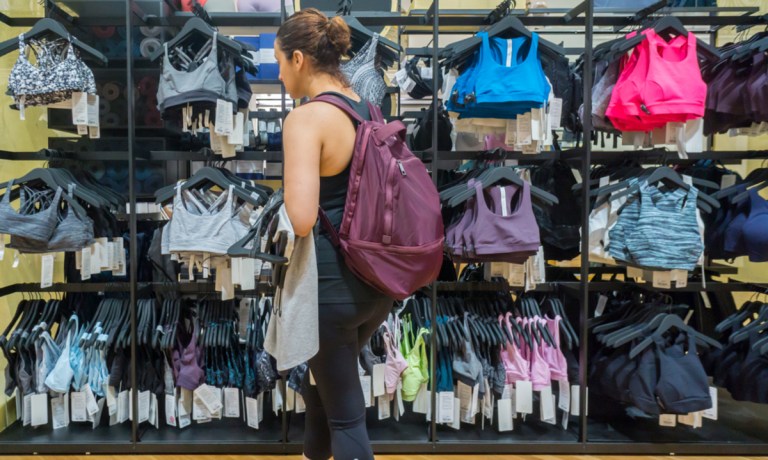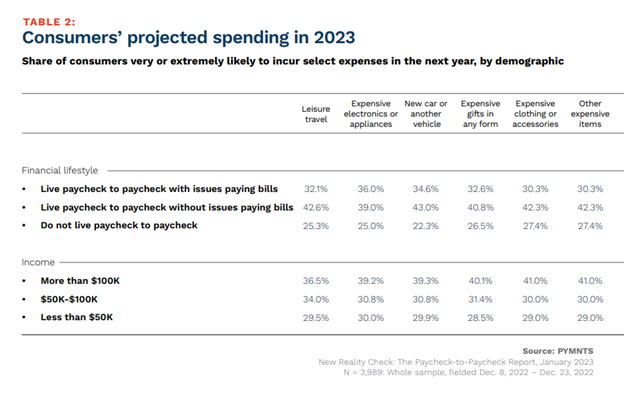High-End Retailers May Be Pinched as High Earners Grapple With Card Debt

The latest data from PYMNTS on paycheck-to-paycheck living shows that high earners feel the pinch of credit card debt and wages that aren’t keeping up with inflation.
And that may wind up pinching the higher-end retailers who depend on wealthier households, feeling flush, to keep the cash registers (the virtual ones, too) ringing.
The data shows a number of correlations: Paycheck-to-paycheck consumers tend to live, by and large, in more urban areas, which might make sense given the relatively higher cost of living in cities. As many as 36% of high-income consumers live in urban areas, outpacing the midteens percentage rates seen in other income brackets.
For those individuals and households earning more than $100,000 annually, things looked relatively bright in April 2022, when 42% of high-income consumers were living paycheck to paycheck. The number has crept up in the ensuing 12 months, when roughly half of higher earners report living paycheck to paycheck. At 49%, the tally’s been roughly the same the last several months, which indicates a bit of running in place in terms of meeting the monthly nut. Despite adjusting at least some spending habits, stretching to make ends meet remains a stubbornly entrenched state of affairs.

Inflation Outpaces Wages
Breaking down the high-earners’ paycheck-to-paycheck lifestyle, other PYMNTS research from this year shows that as of the end of last year, 16% of high earners were struggling to pay their monthly bills, and 34% lived between paychecks without issues paying the bills.
As for paying for it all: Usage of almost all credit products is higher among urban consumers. Eighty-two percent of urban consumers carry outstanding credit card balances — which represent more than half of available savings. At the same time, 71% of respondents living in urban areas reported that wage increases have not matched inflation.
There’s been a tempering of spending expectations, as we’ve seen, as only 39% of high-income consumers say they’d planned to buy a new vehicle this year, and roughly the same percentages held true for expensive electronics and clothing.
The pinch is showing up a bit during the earnings season that is now winding down. Though not located in urban centers, Walmart commentary from management noted on its earnings call that there had been a marked shift to grocery spend at the retail giant from higher-earning households — a read-across that might signal that things are relatively tougher for households in urban settings, too, as the cost of living is higher in the city.
Similarly, Big Lots management has cited on its own call that higher-income customers are making up more foot traffic than had been seen in the past. The fact that the $100,000-and-up crowd sees spending this year, overall, to grow 5%, the lowest level seen coming into the last few months of 2023, speaks volumes.
We’ll get a better lay of the land when companies like Gap, already seeing comp sales down mid-single-digit percentage points even amid the holiday season, report earnings.
Buy now, pay later (BNPL) may prove no panacea in the months ahead — and alternative payment methods have helped luxury retailers like Movado see sales buoyancy. But as reported earlier in the month, Affirm has noted a pullback in discretionary categories such as consumer electronics, which lost 8% year over year and spending on home/lifestyle products sank 10%.